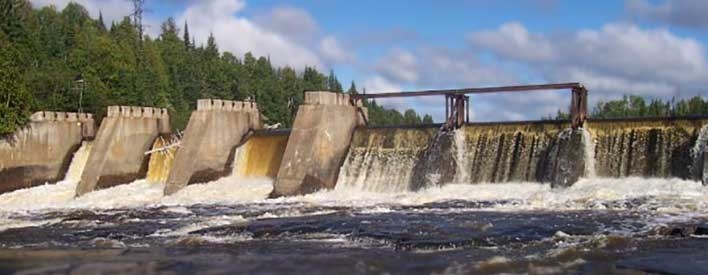RED ROCK, ON — The president of the Red Rock Fish and Game Club believes it would be a serious mistake for the Ontario government to demolish a dam on the Black Sturgeon River.
Guy Rioux told Tbnewswatch that he is far from alone in holding that view, citing numerous communities, groups, organizations and agencies on both sides of the Canada-U.S.border—including Fisheries and Oceans Canada—which are on the record opposing the removal of the 60-year-old dam because it would increase the sea lamprey population.
Opponents believe the structure should be rehabilitated instead, along with the construction of a "trap-and-sort" fishway that would selectively pass native fish species through.
The former Camp 43 dam, built in 1959 for Great Lakes Paper Co. logging operations, no longer meets government safety requirements.
The Ministry of Natural Resources and Forestry has been assessing the impact of its removal for the past seven years.
In 2013, under then-minister Michael Gravelle, the province launched a formal environmental assessment, saying it was moving forward "with its commitment to restore fish populations in Black Bay," where the Black Sturgeon River empties.
While demolishing the structure would provide additional spawning habitat for various fish species such as walleye, coaster brook trout and sturgeon, it would also expand spawning grounds for the invasive and destructive sea lamprey.
"If you open the Black Sturgeon Dam, you'd get another 50 kilometres of open water. Plus, the lamprey barrier that they want to put [50 kilometres upstream of the dam] would only cover one tributary of the river, so they're going to leave the other three wide open," Rioux said.
Fisheries and Oceans Canada has noted that the tributaries were "infested" with spawning lamprey before they were cut off by the dam.
Rioux said the sea lamprey population in Lake Superior has been reigned in for years as a result of various measures undertaken by the Canadian and American governments.
"But if we open up more river, they will be that much harder to control."
Management measures for the sea lamprey include barriers consisting of purpose-built structures as well as numerous dams built for other reasons but which also block the upstream migration of adult lampreys.
The Great Lakes Fisheries Commission, on its website, notes that many dams built for other purposes are being removed to improve fish passage, or have been permitted to deteriorate, threatening their ability to block migrating adults.
"The current network of barriers prevents adults from accessing thousands of miles of habitat, thereby reducing sea lamprey production and saving millions of [lampricide] treatment dollars, but dam removal and deterioration pose an ongoing threat to effective sea lamprey control," the Commission states.
Among other groups opposed to opening the Black Sturgeon River dam is the Ontario Federation of Anglers and Hunters, which says there is no compelling evidence that removing the dam will significantly increase walleye populations.
OFAH also maintains that rainbow trout and Pacific salmon could have a negative impact on native brook trout in the river.
The U.S. government's Fish and Wildlife Service has told the MNRF that decommissioning the Camp 43 dam will result in "a significance increase in invasive sea lamprey parasitism" in Lake Superior, thereby affecting commitments made through the U.S.-Canada treaty Convention on Great Lakes Fisheries, and the U.S.-Canada Great Lakes water Quality Agreement..
Rioux hopes these kinds of arguments ultimately dissuade the province from carrying out the recommendation of a 2017 draft Environmental Study Report that recommended demolition.
He said he has dealt with four different ministers of Natural Resources over the years in his quest to keep the dam intact.
"They've been playing with it for quite awhile. They haven't made a decision. And of course every time the government changes, they re-investigate. That's what they're doing now. They're re-investigating."
Rioux added that the dam "is not falling down, it's just not up to code. The problem is they changed the code."
An MNRF spokesperson has told Tbnewswatch the ministry is currently working with the Ministry of the Environment, Conservation and Parks to determine the next steps.
The spokesperson provided no timeline for a decision.
